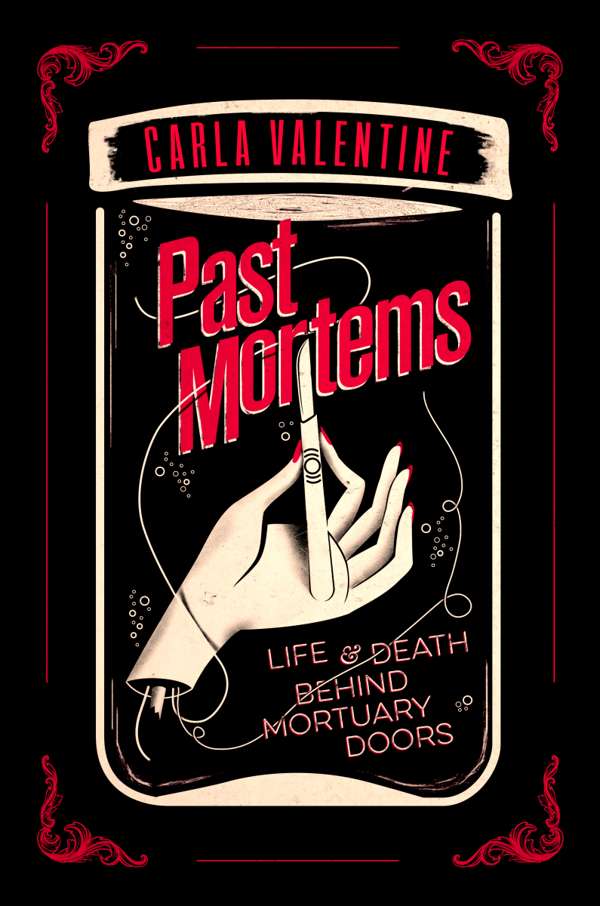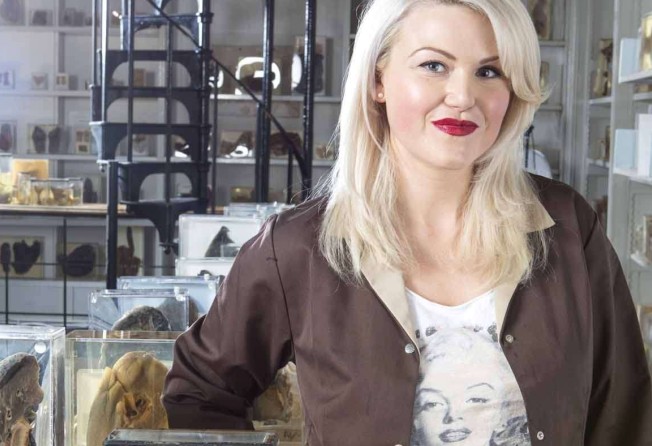
Book review: Past Mortems – the gory details of death you didn’t want to know about
Author and former pathologist’s assistant Carla Valentine spills the secrets of daily life in a mortuary, from removing corneas and carving open the torso to reaching for the ‘skull key’ or the bowel scissors

by Carla Valentine
Sphere
4/5 stars

As a young child, Valentine’s favourite pastime was staging funerals for roadkill victims. Witnessing the death of her grandfather at the age of seven only strengthened her morbid vocation, while the sight of his false teeth landing at her feet seems to have given her a taste for gallows humour. When friends left on their gap year travels, Valentine spent 12 months as an embalmer’s assistant in a funeral parlour. “It was heaven to me,” she says.
After studying forensic science she achieved her ambition – to train and work for 10 years in a variety of mortuaries as an anatomical pathology technologist, or APT, assisting pathologists at postmortems. In her spare time she liked to attend mass grave excavations and visit plague pits.
Today, as technical curator of the pathology museum at St Bartholomew’s Hospital, London, Valentine is one of the loudest, liveliest and brashest advocates for confronting our modern day taboo of death. With her red lipstick and penchant for vintage fashion and gothic tattoos, she is the antithesis of the archetypal sombre-suited, solemn-faced male attendants of the undertakers’ world.
At the museum, she presides over macabre events, such as tea parties with cakes resembling human organs and taxidermy workshops. As a sideline she blogs as “The Chick and the Dead” and runs a dating website for fellow workers in the “death profession” called Dead Meet. It is an understatement to say that Valentine is passionate about embracing death.
While most of western society still prefers death and dead bodies to be hushed away behind closed doors, Valentine is part of a growing “death positive” movement that urges more discussion and transparency about our mortality. Given the popularity of live autopsies on TV and anatomist Gunther von Hagens’ Body World exhibitions , it is clear there is a growing public appetite for death as popular culture.

Any book that is subtitled “Life and Death Behind Mortuary Doors” is plainly not for the fainthearted. Valentine leaves nothing to the imagination, describing each process with sensory precision. A day in the mortuary begins with a body “stocktake” when staff slide open the fridge drawers to discover what has been deposited overnight. Wrapped in sheets or zipped up in body bags, and occasionally triple bagged if containing decomposing parts, each corpse is a “gift” so that every day is “like Christmas Day”. Outwardly the bodies come in a rainbow of colours, their hues providing clues to death. Bright yellow could mean liver failure; purple may mean congestion. But opening up the body is when the secrets really spill out.
Valentine recalls the simultaneous anxiety and excitement of the moment she made her first incision. As she carved the typical Y-shaped cut down the torso with the mortician’s favourite knife, a PM40, the skin parted “with the ease of butter”. Next the ribs are cut through and the sternum removed, then the organs are taken out – the lungs first released with “a scooping motion”, the bowels pulled out in “one long string” – until the mortician is “holding aloft a mass of dripping viscera”. There is a special tool for every purpose from the rib shears and bowel scissors to the “skull key” and “bone nibblers”, and even ladles are pressed into service when occasion demands.
Taking professional pride in her work, Valentine was always first in line for the most grisly tasks. She specialised in postmortems on premature babies, learned to remove eyes – for cornea donation – and spent two weeks working in the temporary mortuary helping to identify the victims of the 2005 London bombings. Compelled by scientific curiosity, she volunteered to deal with bodies in the most severe stages of decomposition.
“I found the decomposing deceased intriguing, and quickly became immune to the moist squelchy noises, fetid smells and endless parade of insects.” In her lunch break she would take the maggots she found to a local museum for analysis, acquiring the nickname “maggot girl” for her pains, and occasionally found the creatures in her hair and even her bra.
Sparing no details, she describes the “multisensory experience” of each of the five stages of decomposition with a ghoulish zeal and wisecracking humour. The scent of decay “nudges the back of your throat” like “being kissed too deeply by a rotting tongue” while the groans, burps and farts that emanate from the corpses compete with the “Rice Krispie pop of maggots beneath your feet”.
Having thus opened, dissected and eviscerated the human body, Valentine painstakingly reconstructs the fragmented parts with the aid of twine, glue, cotton wool and sticking plaster, then tenderly washes, shampoos and grooms the deceased to make them presentable to loved ones again. In the same way, she exposes her own emotional frailties and fractures – though a decade of living with the dead can hardly have helped. Finally she closes the doors on the mortuary for the last time to take up her new museum role.